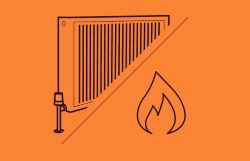As more and more people are working from home due to the pandemic, energy usage in residential properties has increased significantly. With many employees now using laptops, desktops, and other electronic devices throughout the day, energy consumption has risen, leading to higher energy bills and increased carbon emissions. However, there are several ways that you can reduce your energy usage while working from home.
By making some small changes to your energy use and your home office setup, you can save money on your energy bills and help to reduce your carbon footprint. In this article, we will explore some energy-saving tips for working from home that can help you to reduce your energy usage and lower your impact on the environment. From adjusting your computer settings to choosing energy-efficient office equipment, we will provide you with practical advice to help you save energy and money while working from home.
How can I reduce my electric bill?
Reducing your electric bill can seem like a daunting task, but there are a few simple things you can do to help lower your energy usage and costs. First and foremost, it’s important to understand what’s driving up your electricity consumption. Are you using a lot of high-energy appliances, such as space heaters or large electronics? Is your home poorly insulated or drafty, causing you to crank up the heat or air conditioning more than necessary? Once you’ve identified the main culprits, you can take steps to address them and save money on your electric bill. There are many tips to help make your home office save electricity – like investing in a new printer, certain types of lamps, smart home appliances, computers and other equipment, heating systems, using sleep mode, turn off the power to everything off at the end of the day.
One of the easiest ways to reduce your electricity usage is to simply turn off lights and electronics when you’re not using them. This might sound like a no-brainer, but it’s surprising how many people leave their TVs, computers, and other devices on standby mode when they’re not in use. By turning them off completely, you can save a significant amount of energy over time. Similarly, consider using energy-efficient light bulbs, such as LEDs or CFLs, which use up to 80% less energy than traditional incandescent bulbs. Having an energy-efficient home and making your home office energy efficient go hand in hand. If you use a lot of energy in your home office, small changes can help save money and energy, things like remembering to turn off the lights can reduce energy consumption and go a long way.
Another way to lower your electric bill is to use energy-efficient appliances and electronics. Look for appliances with the ENERGY STAR label, which indicates that they meet strict energy efficiency guidelines set by the US Environmental Protection Agency. These appliances can save you hundreds of dollars in energy costs over their lifetimes, so it’s worth investing in them if you can.
Finally, consider taking advantage of time-of-use pricing plans offered by your energy provider. These plans charge different rates for electricity usage based on the time of day, with lower rates during off-peak hours (typically late at night and early in the morning). By shifting your energy usage to off-peak hours, you can save money on your electric bill without sacrificing comfort or convenience.
How to Save Energy at Home?
There are numerous ways to save energy at home, and it’s essential for reducing your energy bills and helping to combat climate change. By adopting energy-efficient practices and using energy-saving technologies, you can save both money and the planet.
One of the most significant ways to save energy is by reducing heat loss through insulation and draught-proofing. Proper insulation in the walls, roof, and floors can reduce the amount of heat lost from your home, while draught-proofing windows, doors, and other gaps can prevent cold air from entering.
Another way to save energy is by using energy-efficient appliances, such as light bulbs, refrigerators, washing machines, and dishwashers. Energy-efficient appliances use less energy to perform the same tasks as their less-efficient counterparts, and they can significantly reduce your energy bills.
You can also save energy by adjusting your behaviour and habits. For instance, turning off lights when you leave a room, using a clothesline instead of a dryer, and only boiling the amount of water you need can all save significant amounts of energy.
Smart technology can also help you save energy by automating your home’s energy usage. For instance, a smart thermostat can adjust the temperature in your home based on your schedule, while smart plugs can switch off appliances that are not in use.
Finally, you can also consider generating your energy through renewable sources, such as solar panels or wind turbines. While the initial investment can be costly, it can pay off in the long run by reducing your energy bills and your carbon footprint.
In conclusion, saving energy at home is essential for reducing your carbon footprint, lowering your energy bills, and combatting climate change. By adopting energy-efficient practices, using energy-saving technologies, and generating your energy, you can significantly reduce your energy usage and make a positive impact on the planet.
Where is the best place for a small home office?
If you work from home, having a designated space to work in can help boost your productivity and create a better work-life balance. However, it’s important to consider the energy efficiency of your home office space to reduce your carbon footprint and save money on your energy bills.
The best place for a small home office is in a room that is already well-insulated and receives natural light. This will help reduce the need for artificial lighting and heating, saving energy and money. If possible, choose a room that is close to the centre of your home, as this will help to reduce the amount of heat lost through external walls.
If you don’t have a spare room for a home office, consider setting up your workspace in an area that is already heated, such as your living room or bedroom. However, be sure to turn off any heating in the rest of the house to prevent wasting energy on unused spaces.
Investing in energy-efficient office equipment, such as a laptop rather than a desktop computer and LED lighting rather than incandescent bulbs, can also help reduce your energy usage. Be sure to turn off all electronics when not in use to further reduce your energy consumption.
Overall, the best place for a small home office is one that is energy-efficient and well-insulated. By taking steps to reduce your energy usage, you can create a comfortable workspace while also doing your part for the environment.
Home Office Energy Savings Tips
As more people are working from home, home offices are becoming an increasingly important part of our homes. However, running a home office can also lead to an increase in energy usage and costs. Luckily, there are several ways to reduce your home office’s energy consumption and save money on your energy bills.
Firstly, consider your lighting. Switching to LED light bulbs is an easy and cost-effective way to reduce energy usage. LED bulbs use up to 90% less energy than traditional incandescent bulbs and can last up to 25 times longer. Additionally, take advantage of natural light as much as possible by placing your desk near a window.
Next, pay attention to your computer and other electronics. Turn off your computer and unplug electronics when they are not in use. Many devices still use energy even when they are turned off, so unplugging them entirely can save you money. Additionally, consider using a smart power strip that can automatically turn off electronics when they are not in use.
Invest in energy-efficient office equipment. When purchasing new equipment, look for the Energy Star certification. Energy Star-certified equipment is designed to be more energy-efficient, which can lead to significant savings on your energy bills over time.
Keep your office well-insulated. Proper insulation can keep your office warm in the winter and cool in the summer, reducing the need for heating and cooling. Make sure windows and doors are properly sealed and add weather stripping to any areas that may have gaps.
Finally, reduce paper usage. Going digital not only saves paper, but it also reduces energy usage. When possible, opt for digital documents and use e-mail instead of paper correspondence.
By implementing these energy-saving tips, you can reduce your home office’s energy consumption and save money on your energy bills. Not only will you be doing your part for the environment, but you’ll also have a more efficient and cost-effective home office.
Switch to an Energy Efficient Ethernet
Switching to an energy-efficient Ethernet is an easy way to reduce your energy consumption and save money on your energy bills. An energy-efficient Ethernet automatically adjusts the power consumption of your network equipment based on the traffic volume, which means that it only uses the amount of power that is necessary to operate.
An energy-efficient Ethernet uses a feature called “Energy Efficient Ethernet (EEE)” or “IEEE 802.3az” which helps to save energy by managing the amount of power used by network devices when they are idle or not in use. This feature is built into many newer network devices and can be enabled through the device’s settings or configuration options.
By switching to an energy-efficient Ethernet, you can reduce your energy consumption by up to 80%, which can translate into significant savings on your energy bills. This is because the network equipment is one of the most energy-intensive components in your home or office, especially if you have multiple devices connected to your network.
To switch to an energy-efficient Ethernet, you need to ensure that your network devices support the Energy Efficient Ethernet (EEE) feature. Most newer devices will have this feature, but older devices may not. You can check the device’s manual or specifications to see if it supports EEE.
Once you have confirmed that your device supports EEE, you can enable the feature through the device’s settings or configuration options. This will allow the device to automatically adjust its power consumption based on network traffic volume.
In conclusion, switching to an energy-efficient Ethernet is an easy and effective way to reduce your energy consumption and save money on your energy bills. It is a simple process that involves enabling a feature on your network devices that can significantly reduce the amount of power used by your network equipment when it is idle or not in use.
Replace Standard Light Bulbs
Replacing standard light bulbs with energy-efficient LED bulbs is an easy and effective way to save energy and reduce your carbon footprint. LED bulbs use significantly less energy than traditional incandescent bulbs and have a much longer lifespan, making them a cost-effective solution for your home.
According to the Energy Saving Trust, replacing just one traditional light bulb with an LED bulb could save you around £7 a year on your energy bill. And with LED bulbs lasting up to 25 times longer than traditional bulbs, you’ll also save on replacement costs.
But that’s not all – LED bulbs are also better for the environment. They produce less heat and contain no hazardous materials, making them safer to use and easier to dispose of. And with the UK government phasing out the sale of traditional incandescent bulbs, now is the perfect time to make the switch to LED.
LED bulbs come in a range of colours and brightness levels, so you can find the perfect bulb for every room in your home. They also work with dimmer switches, giving you even greater control over your lighting.
So why not make the switch to LED bulbs today and start saving energy and money? It’s an easy and effective way to make your home more energy-efficient and reduce your carbon footprint.




